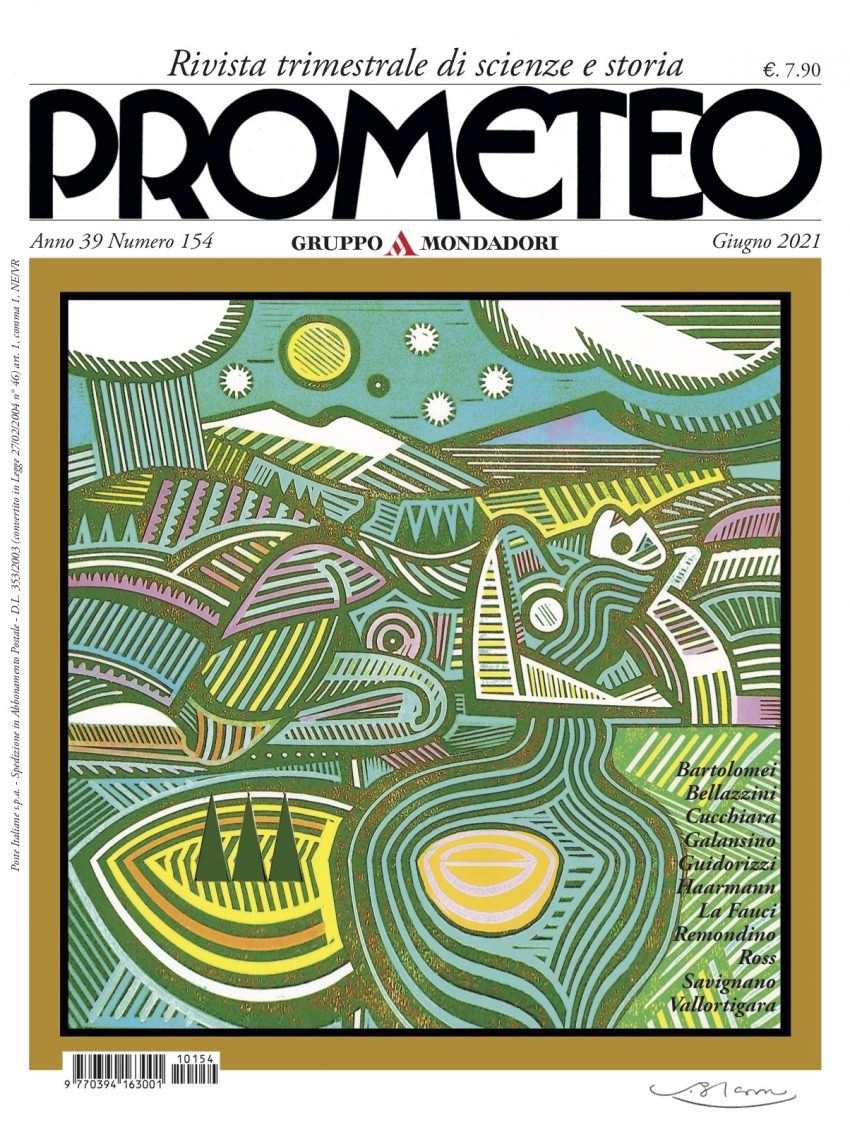- Home
- Media
- News and press releases
- 2021
- Prometeo gets an update: the popular science and history quarterly is now richer than ever in terms of both content and layout
Prometeo gets an update: the popular science and history quarterly is now richer than ever in terms of both content and layout
The evolution begins with the magazine, with a new section entirely dedicated to non-fiction publishing, and continues across the web and social media, bringing content to a wider public with broad cultural interests

Richer, livelier, more accessible: Prometeo, the magazine dedicated to popular science and history, gets and update and a revamp in terms of both content and layout.
First published in 1983, Prometeo over the years has become a point of reference for scholars, university students, researchers, teachers and enthusiasts, thanks to a wealth of detailed and authoritative content in the fields of human, social, physical and natural sciences.
In the new issue, the Mondadori Group’s quarterly magazine embarks of a path of renewal and presents itself to readers with a new enhanced and contemporary formula. On the one hand, an offer of more diversified content, that combines clear exposition, attention to style and the editorial quality for which it has always been known, and, on the other, a more accessible approach, with the experimentation of new language and channels of communication taking the offer to a broader audience.
An evolution that begins with the magazine and continues online, with the launch of a new web site prometeomondadori.it as well as on social media where Prometeo will have a Facebook profile and soon also a presence on Twitter.
The new Prometeo will offer readers and users an eclectic, original and multi-faceted selection of content. From history to the sciences, and from philosophy to art and literature, with the ideas, theories and original perspectives of some of the best scholars of the age.
The revamping of the content is accompanied also by a new layout design and the research involved in the articles will be supported by more harmonious images and illustrations that integrate and enhance the texts, making the magazine more attractive and user-friendly.
THE CONTENT OF THE NEW ISSUE
In the first part of Prometeo readers will find a sequence of articles by established authors dedicated to episodes of history, scientific hypotheses, as well as to forays into linguistics and literature, and philosophical considerations. Starting, in fact, from the myth of Prometheus: from Aeschylus to the present a figure that has inspired essays, stories, and works of art of all kinds, the Greek scholar Giulio Guidorizzi tells who he really was.
And then science. Giorgio Vallortigara, a neuroscientist and member of the Scientific Committee of Prometeo, proposes a radical hypothesis: consciousness as a phenomenon different from thought. In a Crossover special, Prometeo also devotes great attention to the evolution of knowledge and applications in the field of artificial intelligence, an increasingly important issue.
And then, of course, there is art with The Families of Man feature dedicated to an exhibition of fifty great photographers, which opened at the Regional Archaeological Museum in Aosta, telling the story of the end of modernity, the connected world and the pandemic.
Absolutely new in the second part of the magazine is “LIBRIXIME”, a special section of over 45 pages entirely dedicated to non-fiction and its authors. A wide-ranging overview of what readers can find in bookstores. Among the titles featured in the next issue are eleven non-fiction titles, a column dedicated to foreign titles and reprints, the short portrait of the philosopher Giorgio Agamben and an interview with the writer Benjamín Labatut.
A NEW SCIENTIFIC TEAM AND EDITORIAL COMMITTEE
The quality and authoritativeness of the content of Prometeo will be overseen by a new Scientific Team, comprising the historian Sabina Pavone, the economist Severino Salvemini and the neuroscientist Giorgio Vallortigara. The editorial responsibility is entrusted to Gabriella Piroli, a Prometeo journalist since 2012.
These names will be joined by a new Editorial Committee which brings together well-known academics and scientists with younger scholars: Stephen Alcorn, painter, portraitist and illustrator, as always responsible for the cover, Roberto Battiston, professor of experimental physics and long-term head of the Italian Space Agency, the journalist Gianluca Beltrame, Piero Boitani, professor of comparative literature, and well-known English literature expert, David Bidussa, a social historian of ideas, Umberto Bottazzini, the internationally renowned mathematician, Patrizia Caraveo, research manager at INAF and great populariser of science, Pier Luigi Celli, manager, essayist and writer, Luisa Cifarelli, Professor of particle physics and a reference point for physics in Italy, Chiara Franceschini, professor of Art History, Antonio Lucci, a philosopher who works between Turin and Berlin, Alberto Oliverio, neurobiologist, and among the founders of Prometeo, Mariagrazia Pelaia, translator and member of the Editorial Committee for almost twenty years, and Giorgia Serughetti, researcher in political philosophy.